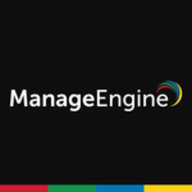


ManageEngine Endpoint Central and Tanium compete in the endpoint management and security category. ManageEngine Endpoint Central has the upper hand in integrated OS management and cost-effectiveness, whereas Tanium stands out in threat hunting and real-time insights.
Features: ManageEngine Endpoint Central offers robust patch management, remote control, and configuration tools for diverse OS platforms including Windows, Mac, and Linux. Mobile device management, software deployment, and asset management are integrated into a centralized console. Tanium provides comprehensive patch management, threat hunting, and security features alongside real-time inventory and compliance insights, ensuring scalability for large-scale organizations.
Room for Improvement: ManageEngine Endpoint Central needs enhancements in Linux support, stability in larger deployments, and more third-party integrations. Improvements in software QA and custom reporting would be beneficial. Tanium could refine its user interface and address false positives in threat detection. Users desire better network optimization and simplified reporting capabilities.
Ease of Deployment and Customer Service: ManageEngine Endpoint Central is typically deployed on-premises with hybrid and cloud options, appreciated for its deployment ease but criticized for inconsistent support responsiveness. Tanium offers diverse deployment models, though setups can be complex. While customer service is generally responsive, resolving complex issues may be slower.
Pricing and ROI: ManageEngine Endpoint Central is budget-friendly with flexible licensing, offering a good ROI by reducing labor costs. Tanium, while more expensive—especially in regions like Latin America—justifies its cost with comprehensive features suitable for large enterprises, providing efficiency gains and manpower reduction.
| Product | Market Share (%) |
|---|---|
| Microsoft Intune | 31.0% |
| ManageEngine Endpoint Central | 10.1% |
| Tanium | 4.9% |
| Other | 54.0% |



| Company Size | Count |
|---|---|
| Small Business | 116 |
| Midsize Enterprise | 46 |
| Large Enterprise | 152 |
| Company Size | Count |
|---|---|
| Small Business | 25 |
| Midsize Enterprise | 14 |
| Large Enterprise | 35 |
| Company Size | Count |
|---|---|
| Small Business | 5 |
| Midsize Enterprise | 3 |
| Large Enterprise | 11 |
Microsoft Intune provides centralized management of mobile devices and applications, ensuring security, compliance, and productivity through integration with Microsoft services like Microsoft 365 and Azure Active Directory.
Organizations use Intune for managing mobile devices and applications, enhancing security and compliance across platforms. With features like single sign-on, conditional access, and zero-touch deployment via Autopilot, it facilitates efficient operations. Intune's scalability, easy enrollment, and capabilities such as remote wipe support diverse device management, offering robust data protection and efficient operation. Despite its features, improvement areas include reporting, compatibility with non-Microsoft devices, and better support for macOS and Linux devices.
What are the key features of Microsoft Intune?
What benefits should users look for in reviews?
In industries such as finance, healthcare, and education, Microsoft Intune is implemented to ensure secure and compliant device management. Companies leverage its capabilities to deploy security policies and manage both corporate-owned and BYOD environments, facilitating a unified approach to data protection and compliance.
ManageEngine Endpoint Central is a unified endpoint management (UEM) solution offered by ManageEngine, a division of Zoho Corporation. It is designed to help organizations efficiently manage and secure their endpoints from a centralized platform. Endpoint Central provides a comprehensive set of features and capabilities to streamline endpoint management and enhance security across diverse devices and operating systems.
ManageEngine Endpoint Central Features:
ManageEngine Endpoint Central Benefits:
Reviews from Real Users
PeerSpot user, Sr Engineer Administrator at a university, says that "Its cross-platform capabilities and the ability to do both OS-level patching and third-party patching are valuable. It is difficult to find a software product that will do all that for you out of the box, and you don't have to do any configuration other than your initial setup. Once you do that, there is a very minimalistic approach to getting it operational. You can have it up and running within a 20-minute time span."
Park Armstrong, Chief Technical and Solution Architect at Vertigo Inc., writes that ManageEngine Endpoint Central is “Helpful for identifying and filling the gaps and meeting compliance needs, but each of their product works as an independent product and lacks integration”.
Tanium offers robust endpoint protection, patching, and inventory management, consolidating the functions of tools like BigFix with capabilities in incident response, network security, and cloud or on-premise deployments.
Known for real-time capabilities, Tanium provides detailed analytics, security features, and device management. Users benefit from quick implementation, real-time updates, and patching campaigns. Despite its strengths, integration and custom plugin expansion remain areas to improve, along with data visualization and network optimization. Reporting enhancements and user training could advance its usability, and some UI elements may require updates for clarity and security.
What are the essential features of Tanium?Tanium's deployment spans industries focusing on endpoint protection and compliance, ensuring reliable device and server management in settings where safety and quick adaptation are critical. Organizations use it for application deployment, compliance checks, and integrating it as an EDR solution, enhancing overall security and operational efficiencies.
We monitor all Unified Endpoint Management (UEM) reviews to prevent fraudulent reviews and keep review quality high. We do not post reviews by company employees or direct competitors. We validate each review for authenticity via cross-reference with LinkedIn, and personal follow-up with the reviewer when necessary.